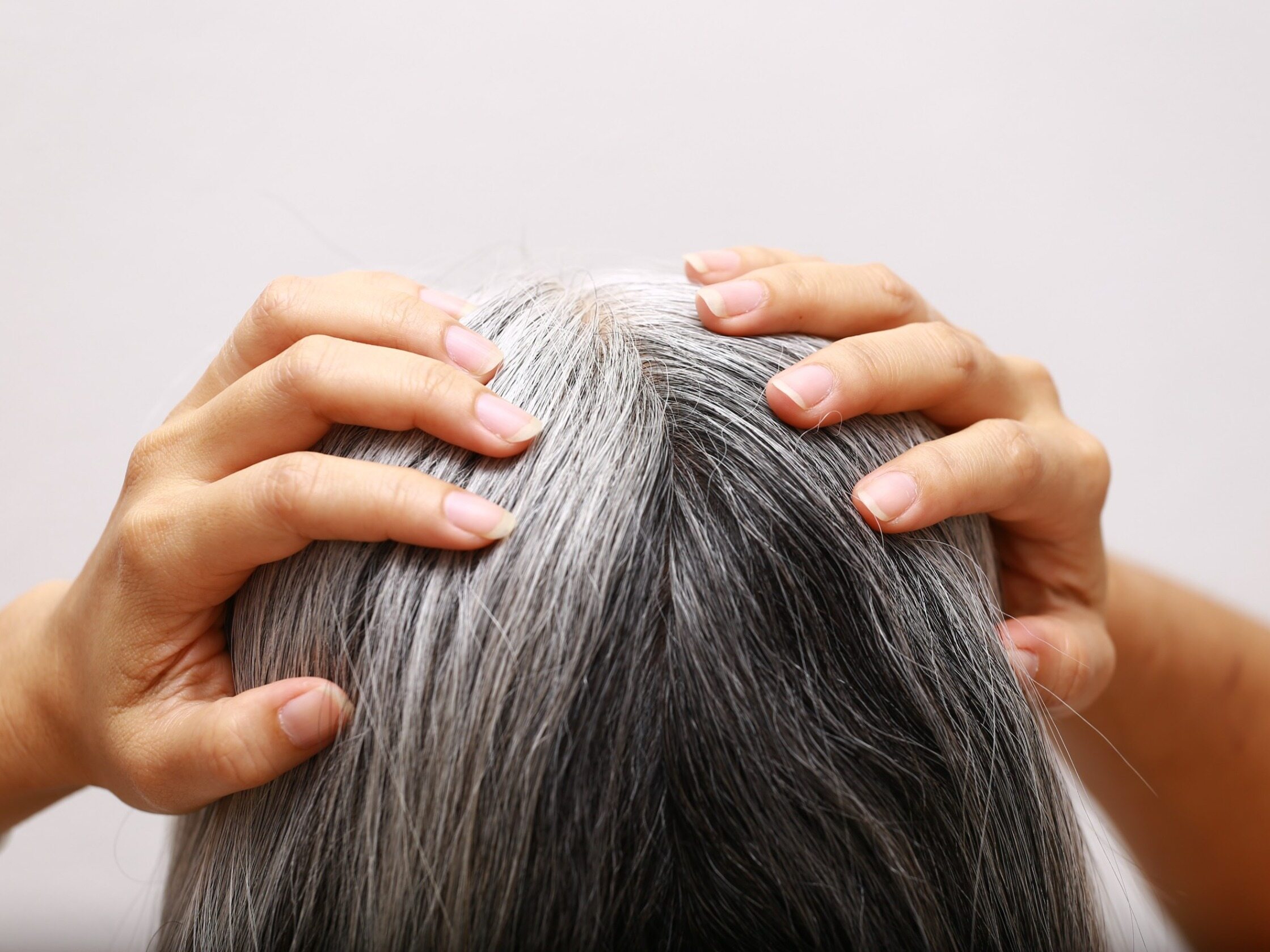Marie Antoinette Syndrome. Can you go gray in one night?

Marie Antoinette syndrome – an unusual result of stress. It involves a dramatic change in appearance in just one night.
Marie Antoinette Syndrome owes its name to the famous Queen of France. Why? Marie Antoinette experienced severe stress in the last months of her life. She was captured and locked in the Bastille, where she awaited her death sentence. These events left their mark not only on her psyche, but also on her external appearance. One legend says that the monarch turned gray in one night. It is not entirely clear how much truth there is in the story. However, there is no doubt that sudden loss of hair color is possible. How does it happen? Check.
Marie Antoinette syndrome and stress
Research conducted by Harvard scientists proves that strong and long-term stress may have a negative effect on hair follicles. Under stress, the adrenal glands produce large amounts of norepinephrine. This neurotransmitter prepares the body for the “fight or flight” response and stimulates a person to act. It increases blood pressure and speeds up the heartbeat. It also causes excessive activation of melanocytes (cells responsible for the production of melanin, the pigment that gives hair color). As a result, they become exhausted. The amount of dye is not enough and gray hair appears.
“When we started the analyses, I expected that stress was harmful to the body. However, the discovery exceeded my wildest imagination. After just a few days, all pigment-producing stem cells were lost. Once they disappear, the dye stops being produced. The damage is permanent,” noted Ya-Chieh Hsu, a specialist in regenerative biology and one of the study’s main authors.
Marie Antoinette syndrome as a disease symptom
Sudden graying (from Latin canities subita) may also be the result of many different autoimmune diseases. Many people associate it with alopecia areata. In this case, the main problem is not the loss of color, but premature hair loss. As a result, those that remain appear completely white. The etiology of the disease is unknown. It is caused by several factors, including chronic stress and chronic inflammation of hair follicles. Baldness is also caused by rheumatoid arthritis, Hashimoto’s disease or vitiligo.
It is worth paying special attention to the last of the mentioned health problems. It may also predispose to premature graying. During the course of the disease, melanocytes are destroyed – not only those responsible for the color of the hair, but also the skin. On the patients’ body, you can see light spots of various irregular shapes, which are clearly confined to healthy tissues.
Not just Marie Antoinette syndrome. Causes of premature graying of hair
Hormonal disorders can accelerate the process of hair graying. Smoking also contributes to this. Tobacco smoke damages tissues, causing local inflammation. As a result, the activity of free radicals increases, which has a negative effect on melanocytes. Scientists have proven that heavy smokers are twice as likely to prematurely lose their natural hair color than people who avoid cigarettes on a daily basis.
The risk of premature graying is also increased by an improper diet, low in minerals and nutrients, especially vitamin D, E and B vitamins. Therefore, it is worth avoiding highly processed food products and making sure that our daily diet includes a lot of vegetables and fruits. as well as legume seeds, nuts, dairy products, groats, whole grain pasta and bread.
Can Marie Antoinette Syndrome be treated?
First you need to identify the cause of the problem. The therapeutic process depends on what causes premature graying. Unfortunately, changes in pigmentation often cannot be undone. However, you can slow down their progression by avoiding stress, leading a hygienic lifestyle or using a properly balanced diet.






